5.7 Garze Tibetan Autonomous Prefecture
The following are photographs of a trip to Yarchen Gar (Ch. Yaqing si), in Pelyul County (Baiyu xian), Garze Tibetan Autonomous Prefecture (Gazi zhou), Sichuan, PRC. This webpage includes scenes of the trip to and from Yarchen Gar, which was reached after three days riding in a jeep, as well as some Tibetan Buddhist-related images from Chengdu. The following webpage (5.8) includes photos from Yarchen Gar itself.
Garze Prefecture is in the Tibetan region of Kham (Kang), a region between central Tibetan and Han-settled Sichuan. In the PRC, it is also called Chuanxi, or Sichuan's West.
Webpage established: 9 Oct 2015
| Place the pointer over the image you wish to see in more detail. |
 |
| 5.7.1 |
|
 |
| 5.7.2 |
|
 |
| 5.7.3 |
|
 |
| 5.7.4 |
|
 |
| 5.7.5 |
|
 |
| 5.7.6 |
|
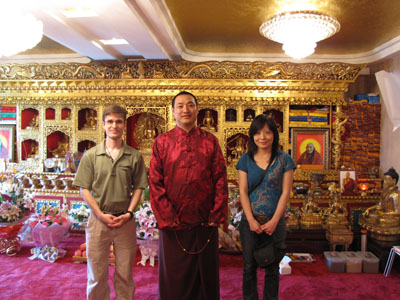 |
Fig. 5.7.1. In a two-level "apartment" (i.e., unregistered Tibetan Nyingma Buddhist temple) in Chengdu. The lower level includes living quarters, where in addition to discussing Buddhism we also watched music videos--most popular in summer 2010 was "Riding a bicycle to Lhasa" (Asiman, 2010), a Chinese song by a Tibetan woman (June 2010). |
 |
| 5.7.7 |
|
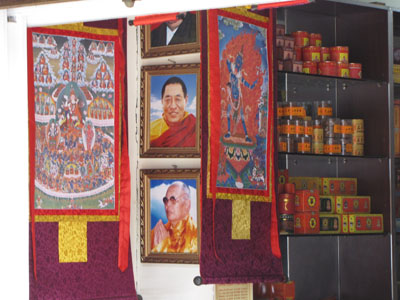 |
Fig 5.7.3. Tibetan Buddhist products for sale, Tibetan quarter, Chengdu. Included are images of the leading lamas of the monastery/ settlement we will be visiting (June 2015). |
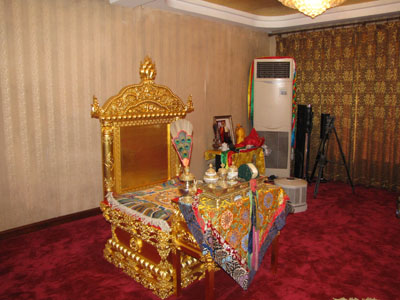 |
Fig. 5.7.2. Ritual throne in the Nyingma apartment/temple, Chengu (16 June 2010). |
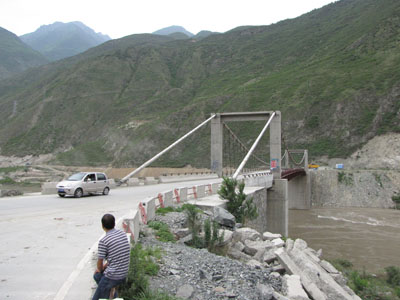 |
Fig. 5.7.6. On the road to Garze Prefecture. The man sitting on the wall is a Han Chinese laborer from Hunan Province who traveled in our car part of the way for a fee. He was traveling to a work site owned by a fellow Hunanese in Western Sichuan (June 2010). |
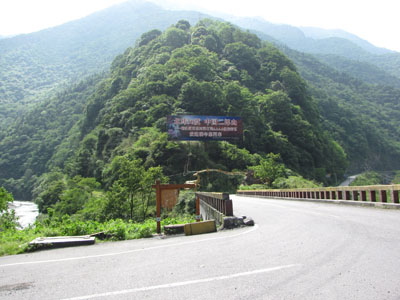 |
Fig 5.7.4. On the road to Garze Prefecture (June 2010). |
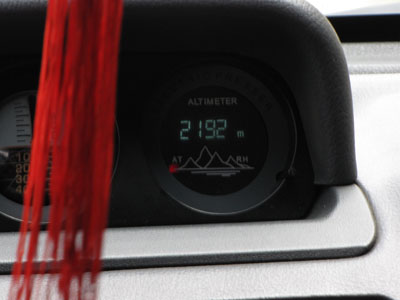 |
Fig. 5.7.5. Our vehicle has an altimeter, something I've never used before. When we reached 4000 meters I began to feel sick; at 4500 meters I felt like I was simultaneously drowning and on a roller-coaster (June 2010). |
 |
| 5.7.8 |
|
 |
| 5.7.9 |
|
 |
| 5.7.10 |
|
 |
| 5.7.11 |
|
 |
| 5.7.12 |
|
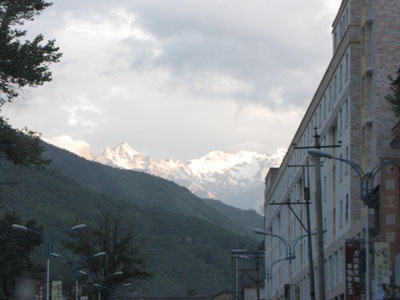 |
Fig 5.7.7. A view of the mountains we'll be going through, from Dardo (Kangding), Garze Prefecture (June 2010). |
 |
| 5.7.13 |
|
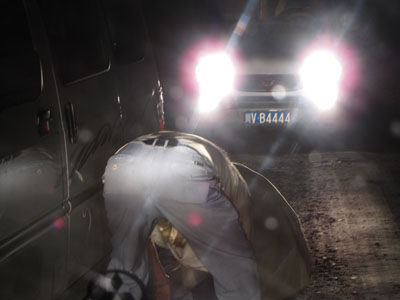 |
Fig. 5.7.8. Changing a flat tire around midnight in an area where bandit attacks are known to happen. The drivers insisted on teaming up with one another, such that neither had to go alone, through this stretch of the trip (June 2010). |
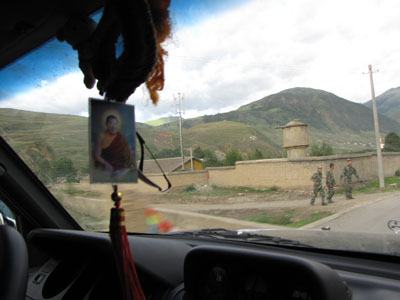 |
Fig. 5.7.10. Near a military encampment, Garze Prefecture, Sichuan. Not long after this trip, this whole area was closed off to foreign visitors (June 2010). |
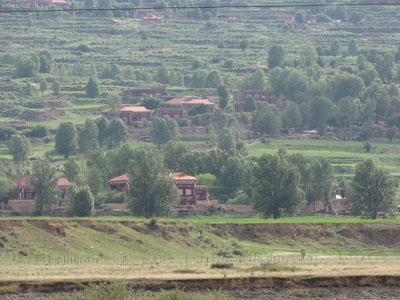 |
Fig. 5.7.11. Wealthy Tibetan homes in Garze (June 2010). |
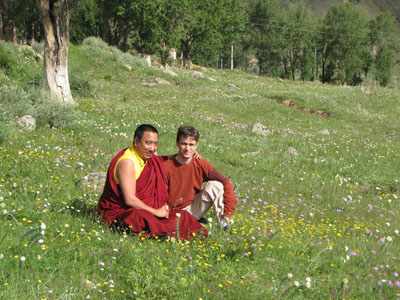 |
Fig 5.7.12. Posing with a Tibetan tulku (reincarnate lama), who was traveling in another jeep along with us for a day or so of the journey (June 2010). |
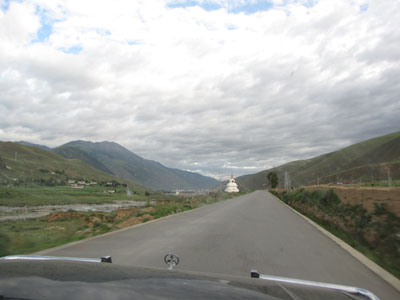 |
Fig. 5.7.9. On the road to Yarchen Gar, in Garze Prefecture, with a stupa on the left (June 2010). |
 |
| 5.7.14 |
|
 |
| 5.7.15 |
|
 |
| 5.7.16 |
|
 |
| 5.7.17 |
|
 |
| 5.7.18 |
|
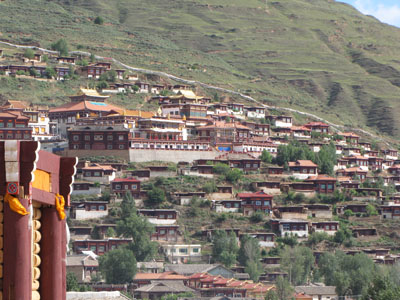 |
Fig. 5.7.13. One of the larger monasteries in the main town in Garze County, Garze Prefecture (June 2010). |
 |
| 5.7.19 |
|
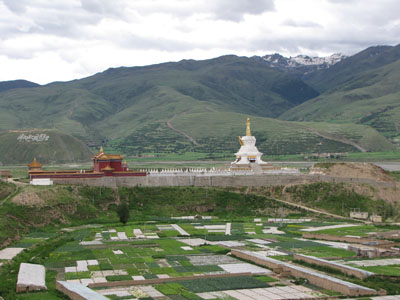 |
Fig. 5.7.14. Typical scenes in the Tibetan region: high mountains, incantations written with stones on hillsides, monastery, and stupa (June 2010). |
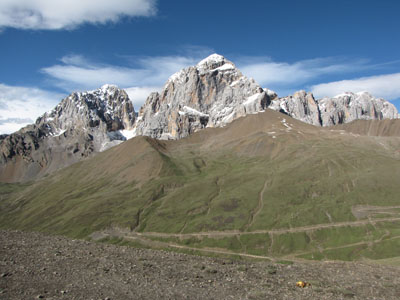 |
Fig. 5.7.16. Getting deeper into the mountains (June 2010). |
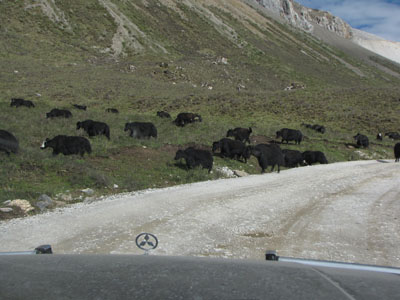 |
Fig. 5.7.15. Waiting for a herd of yaks to get off the road (June 2010). |
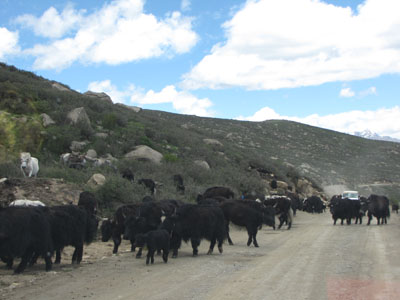 |
Fig. 5.7.17. Now, on the way back from Yarchen Gar, stopping for yaks once again (June 2010). |
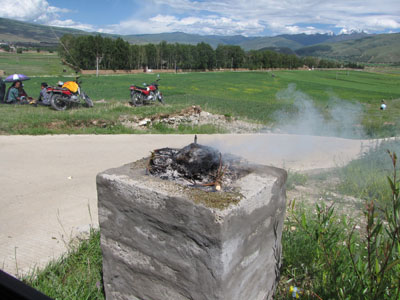 |
Fig. 5.7.18. Tibetan villagers are burning juniper incense as a greeting for a visiting Tibetan Buddhist dignitary (June 2010). |
 |
| 5.7.20 |
|
 |
| 5.7.21 |
|
 |
| 5.7.22 |
|
 |
| 5.7.23 |
|
|
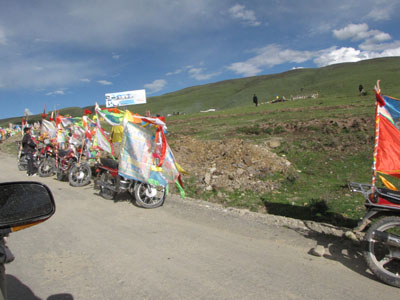 |
Fig. 5.7.19. The Tibetan villagers waiting for a visiting Tibetan Buddhist dignitary. Our jeep drivers notes, with anger and disgust, that the dignity was prevented from visiting at the last moment by government authorities, but that the villagers were not informed (June 2010). |
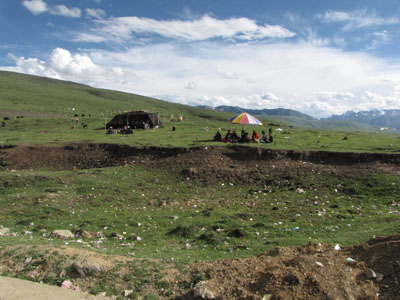 |
Fig. 5.7.20. A tent used by Tibetan nomads (June 2010). |
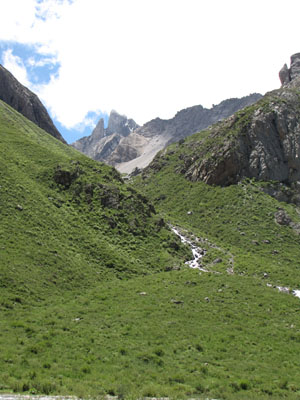 |
Fig. 5.7.21. Our driver points to a spot on the distant cliff where a mummified Tibetan lama is preserved and enshrined. We can barely make out the cave entrance to the shrine, thanks to the prayer flags around it, with our eyes (June 2010). |
|
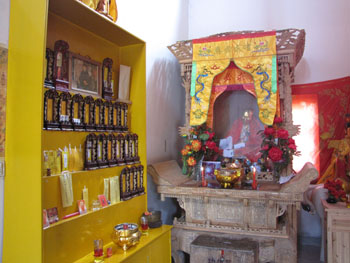 |
Fig. 5.1.30. Mummy of the monk Kuande. In Songshu an, Jiuhuashan, Anhui (Douglas Gildow, 4 July 2009). |
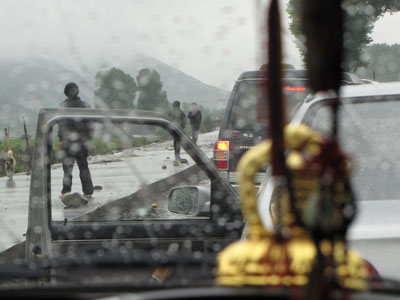 |
Fig. 5.7.22. Facing a road block for most of the afternoon, in the rain. Authorities have closed off the road to ordinary traffic to expedite the trip of a visiting high official. However, if you have high enough rank, you can get through the blockade. We do not (June 2010). |
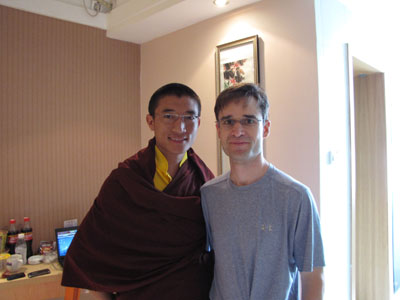 |
Fig. 5.7.23. Back in Chengdu, visiting another Tibetan monk, one of five brothers, all of whom are tulkus (June 2010). |
|
|
|
|
|
Go to Next Album
|
| |
|
